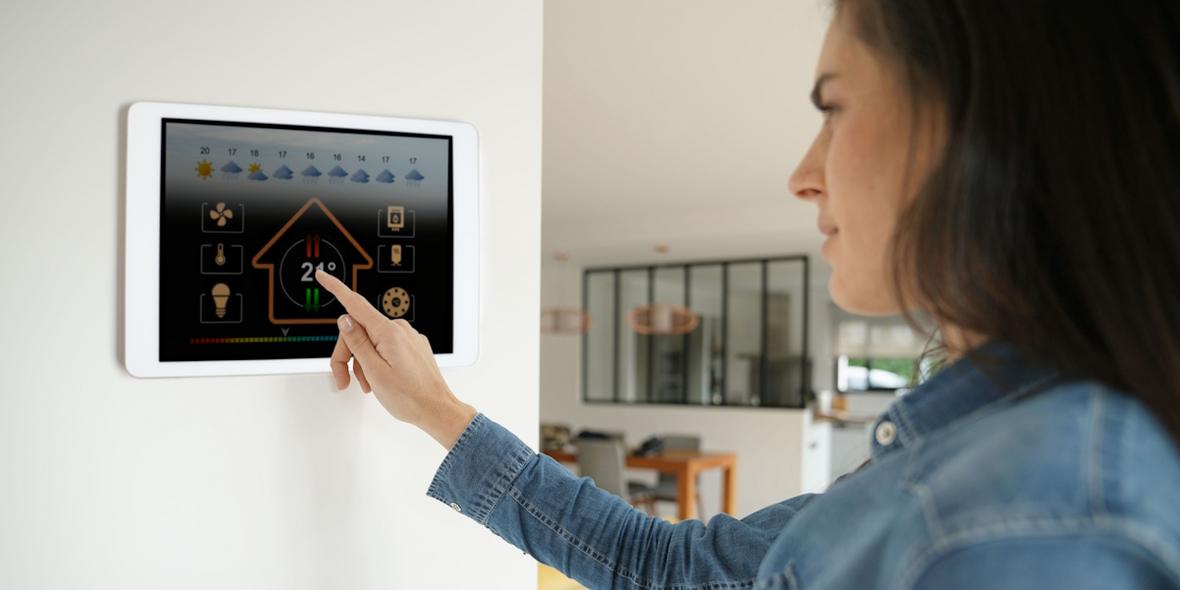The acknowledged global standard for smart home automation and building control is KNX.
KNX is a technology that regulates the automation of essential building systems, including HVAC, lighting systems, multimedia, security, energy management, and more, in any residential, commercial, or industrial structure.
This article will teach you everything you need to know about KNX technology, including how it operates and the reasons you should absolutely think about incorporating KNX systems into new construction or into structures that are already standing.
What is KNX?
A system that prevents the issue of isolated devices speaking “different languages” is necessary in order to convey control data to all building management components (or smart home devices/functions).
KNX devices may control white goods, HVAC, security systems, energy management, audio video, blinds and shutters, displays, and more.
KNX is an open global standard with over 300 different manufacturers providing products that all inter-work and operate together flawlessly, unlike proprietary protocols (which only the vendor supports).
KNX works by ensuring that all elements, gadgets, features, and operations of any building (or outdoor area) quickly and remotely communicate using one common language.
How Does KNX Function?
The primary nervous system for all automations is the KNX bus line. When building a new home or remodelling an existing one, an additional green cable is connected in addition to the regular mains supply.
In accordance with the KNX standard for building automation, the various building technology components are connected to one another via the primary KNX bus line.
Sensors, detectors, parameters, etc. are used to manage the cable system, and end users can effortlessly handle these components using a laptop, smartphone, or tablet.
All systems and devices connected to the network via the KNX bus are routed in parallel with the electrical power supply, connecting:
Push buttons, thermometers, anemometers, and other sensors collect data and transmit it as a data telegram on the bus.
Data telegrams are received by actuators (dimming units, heating valves, and displays), which are then transformed into actions; and devices and components of the system that perform controllers and other logic operations (such as room temperature controllers and shutter controllers) (e.g. line couplers, backbone couplers).
In addition to having sensor capabilities, many actuators also have controller functionality (e.g. for measuring operating hours, number of switch cycles, current, electrical power consumption, and more).
A system interface component loads application software onto the devices along with system topology and commissioning software.
Access to installed KNX systems is possible over LAN, point-to-point links, or phone networks, allowing for centralised or decentralised control of the system using computers, tablets, and cellphones with touch screens.
The following are some of the main components of the KNX system architecture:
- Application models for building automation that collaborate and are dispersed.
- Plans for network resource management and configuration, as well as for allowing the binding of components of a distributed application in various nodes.
- A communication system that can host distributed applications that has a message protocol and models for the communication stack in each node (KNX Common Kernel).
- Models to represent these components while creating real devices that will be installed and connected in an installation.
What kinds of structures can have a KNX system installed?
From a tiny cottage to a sizable retail mall or industrial complex, KNX infrastructure and KNX smart building systems can be employed in practically any building or outdoor location.
- Private houses
- Residential setting (apartments, retirement homes, town houses, etc.)
- Offices \Plazas
- Schools
- Casinos \Hospitals
- Shopping Centers
- Outdoor areas and public structures (government buildings, libraries, council land, etc).
- Factories and manufacturing facilities
KNX systems’ advantages
1. KNX is a symbol of superior product quality.
The KNX Association demands strict production and quality control at all times throughout the life of a KNX product.
Therefore, before they can even apply for a KNX product certification, all manufacturing members of the KNX organisation must demonstrate conformity with ISO 9001.
KNX products must also adhere to the standards of the European and International Standard for Home and Building Electronic Systems in addition to the manufacturer’s adherence to ISO 9001.
In the event of a question, the KNX Association has the right to request further manufacturer test reports to support the declaration of hardware conformance or to have certified items retested.
2. A distinct and independent Engineering Tool Software (ETS®) manufacturer.
All KNX approved items can be planned, engineered, and configured using the PC software application ETS.
Because the tool is manufacturer independent, a system integrator can incorporate products from various manufacturers into a single installation.
3. KNX is applicable to all smart home and building automation control applications.
KNX can be used for all conceivable home and building control tasks, including lighting, shutter control, security, heating, ventilation, and air conditioning, as well as monitoring, alarms, water control, energy management, metering, and many more tasks.
Seven stages for your unique report
If you inform KNX: You will get your own report.
- Your smart home project’s kind
- Your real estate’s kind
- The dimensions of your ideal smart home
- The spaces in your smart home of the future
- Your spending limit and timeline
- Your top concerns
- Those applications you want
A thorough report is available for download after the planning process is complete. After doing this, you will be one step closer to having your ideal smart home.
A myKNX account is required to use the Smart Home Planner. In the planner’s final stage, you can make one if you don’t already have one. KNX can substantially increase the effectiveness of your smart home and it can also make the process quite easier.

